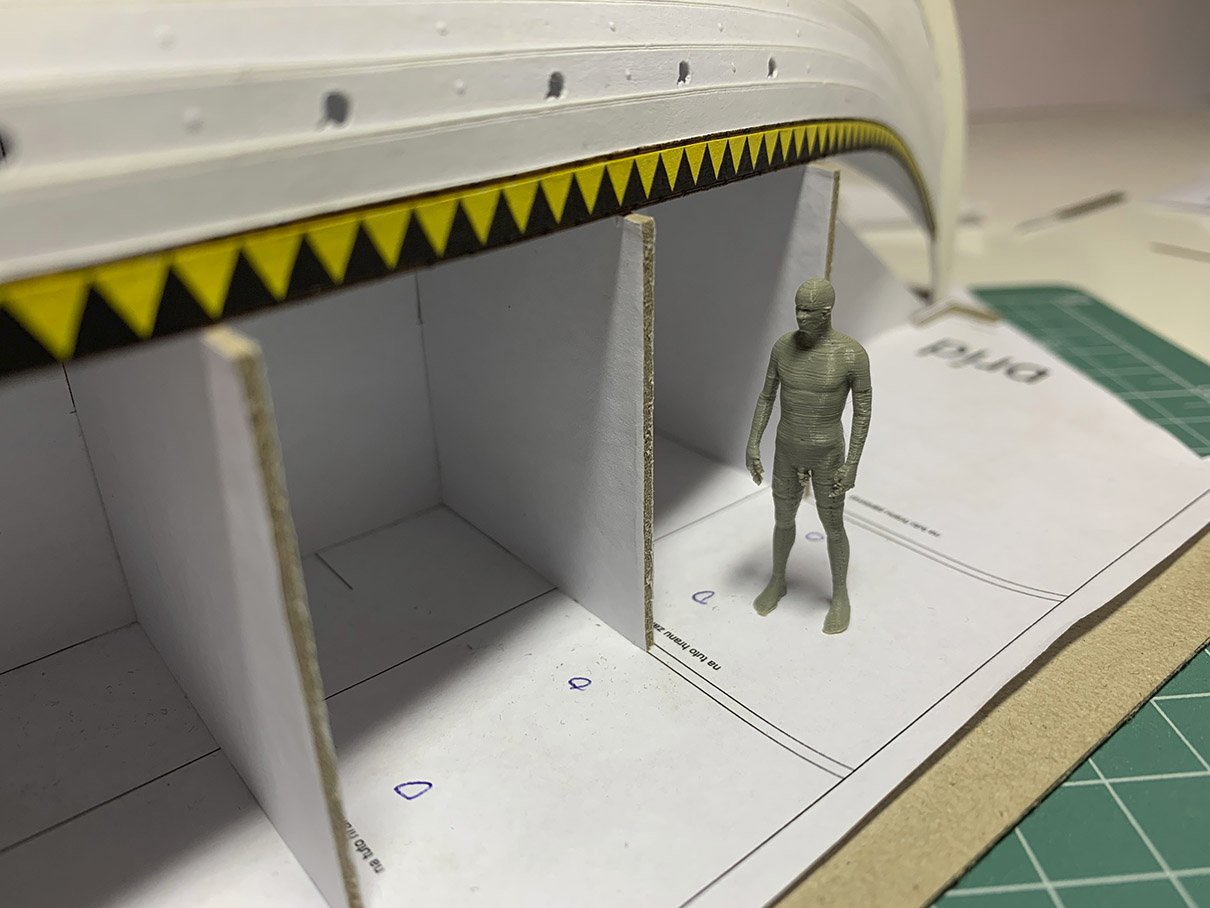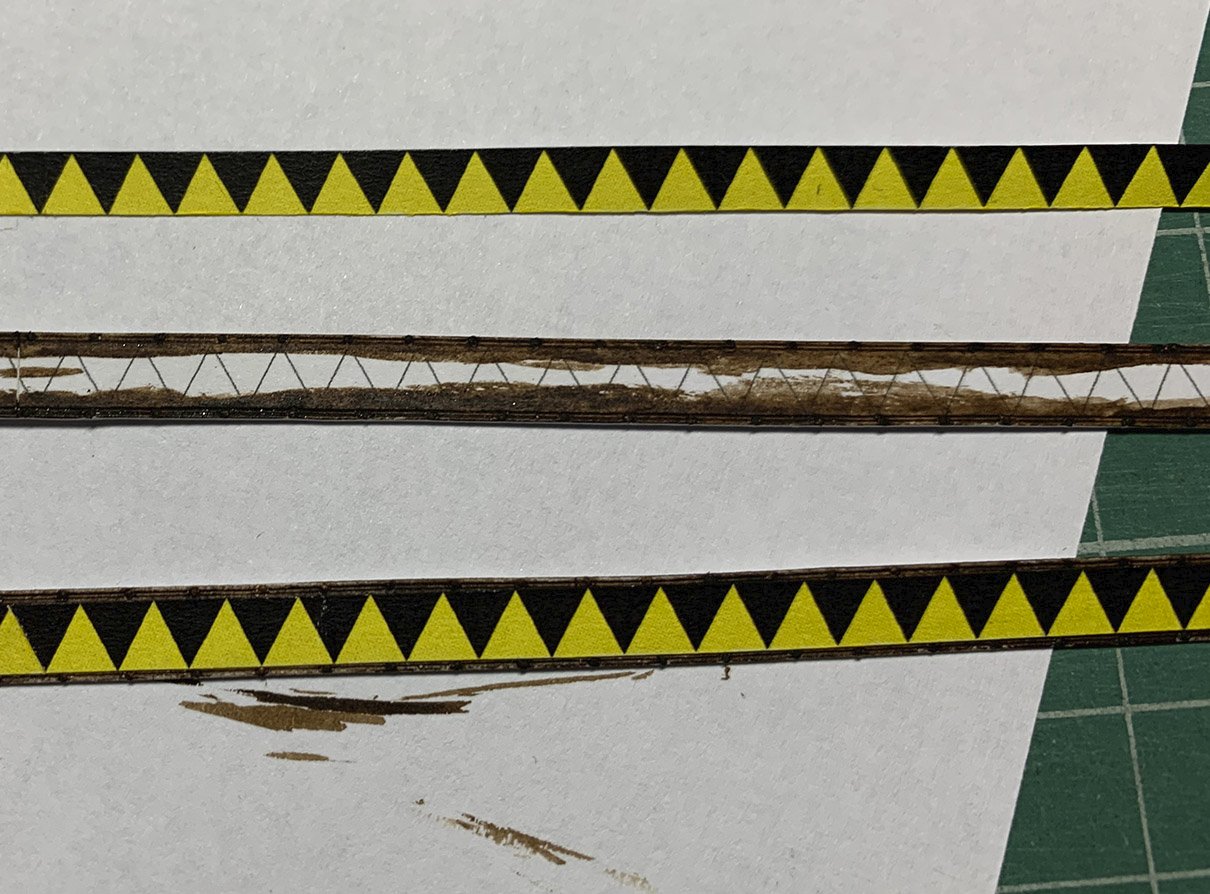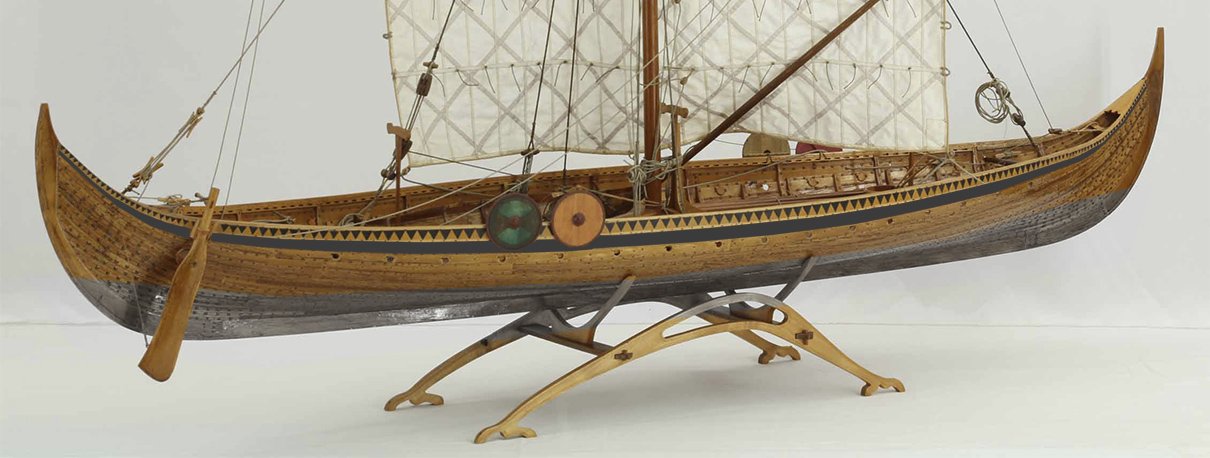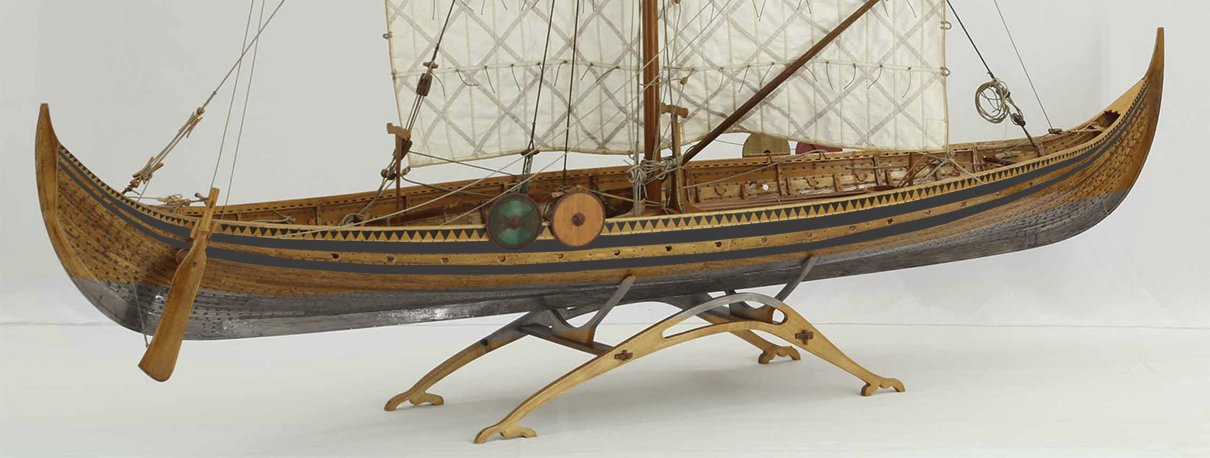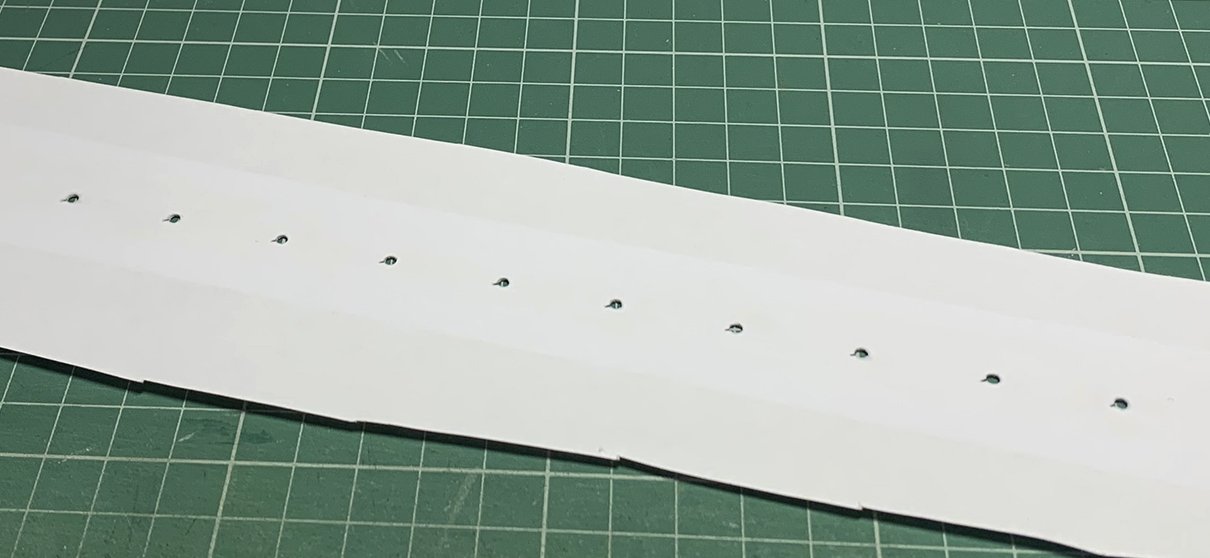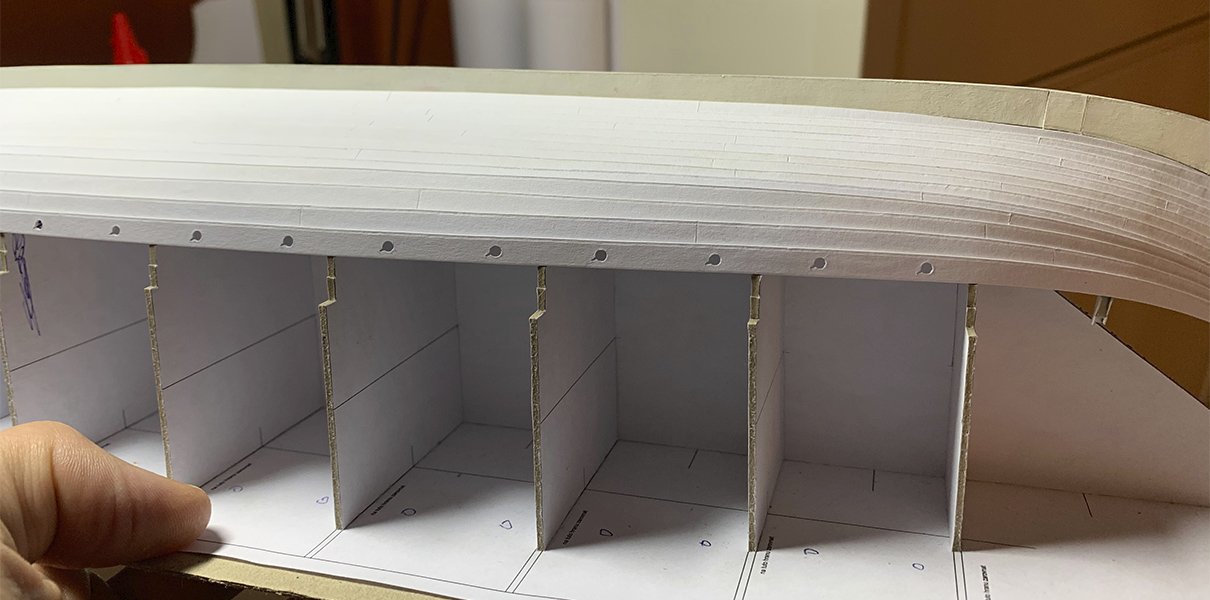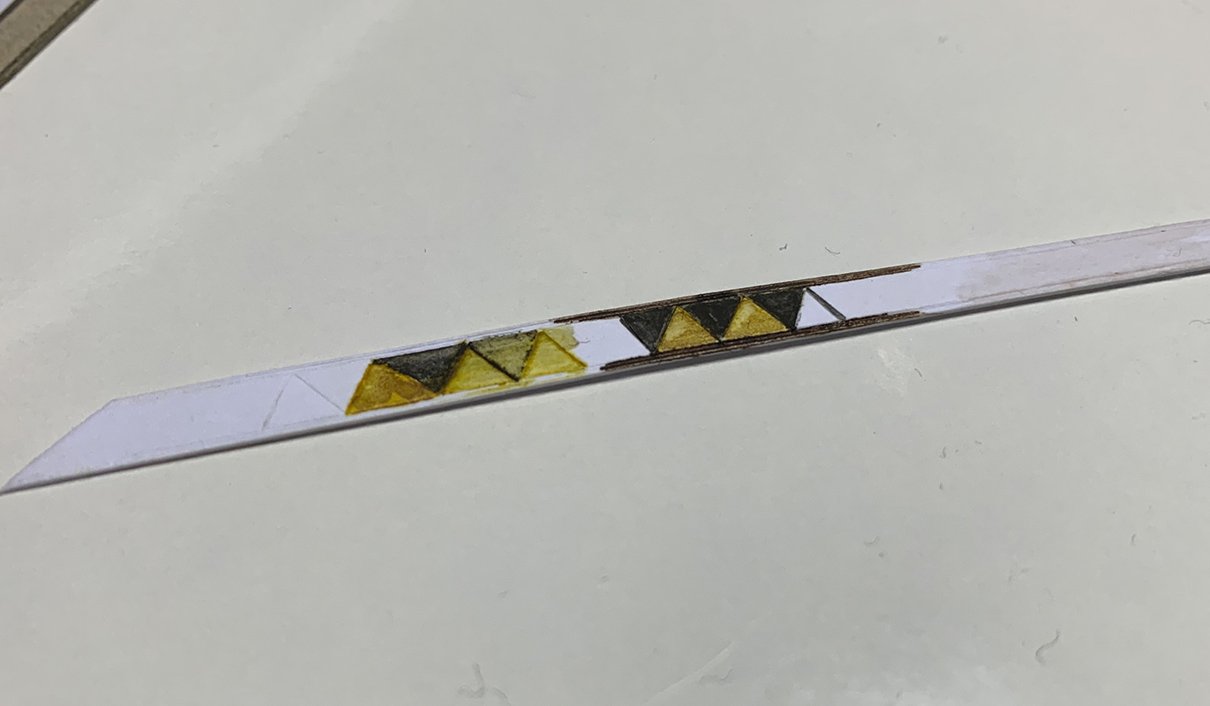
bigpetr
Members-
Posts
123 -
Joined
-
Last visited
Content Type
Profiles
Forums
Gallery
Events
Everything posted by bigpetr
-
Hello friends, I have prolific discussion with realy knowleable men who sails and maintain viking ship replicas. He proposed to do shield rack on Gokstad. I will try to investigate this idea, because It would be practical to have one. But bigger news I am excited about is that if he will help me I will do this type of rigging: It is not the "official" rigging used on viking ship archeological replicas, but it was depicted on several pictures from that age. I am realy looking forward to try to interprete this drawings. Do you know some models with this rigging used?
-
I am looking forward to see your figures. I want to do my figures basicly the same. I will do rought 3d scans of some protagonist (the most probably my brother) is desired poses and use it to pose naked figure, print it on FFD 3d printer and dress with paper cloth. I did some tests and it looks good, poses are realy lifelike. This is one of test figure printed in scale 1:48. Figure layers are exgerated here, they are only lightly visible upclose and are not noticeable from distance the model will be looked at. SLA printer would do better job but I have this printer at my hand and most of it will be under the cothes anyway. Maybe I should find someone to print hands and heads on SLA printer for me. I had the same dilema with 3d printed vs hand made the whole model. I feel it the same as you silverman. Hand made model has different feeling. 3d printed model feels like I did not realy buld it eventhou I designed it completly in 3d. It feels like bought one. It is somehow soulless. But to be able to 3d print some acessories or small parts can be great help.
-
It is looking nice Eric, it is absolutely worth the extra work. Why deckplanks were not protected with tar? It was disposable and easily replaceable so no need to protect it? Kit instructions says to do it this way, but does anymone know why? Was it common practice at times or it is just for visual richnes of the model?
-
Card is worth the try. Chalenge (for me, since I did this first time) is that you have to imitate the materials with paint. With wooden model you have it for free. One row of rivets from fore to aft takes me about hour including punching them. So to rivet outer hull takes me 17*2= 34 hours. I will interlace it with other building task like CAD work on the ship, mastfish, rudder to rest from it
-
Thanky you Binho, . Rivets are punched with o,5mm diameter punch tool from the 0,1 mm thick paper to be in scale with real rivets and glued on the surface of the plank. I decided not to paint them with metalic color, because on ship reconstructions they are covered with protective paint and metal mostly do not shine throu. Rivets will be on the rest of the hull too. I will also do tree nails on outside hull, not inside where they were inline with the plank surface. I needed to rivet this planks first so I can paint them before instaling them. It will be easier to colour triangles before instaling the planks. Painting them is what I am working on now. Then I will do rest of rivets on outer hull and then finaly detach the ship from the jig. I almost detach the ship from the jig few times to see it without it, but I manage to supress my impatience. Riveting will be much easier with the jig attached
-
As stated - no shortcuts here. Especialy if you want something precise and suitable for manufacturing based on these plans. Converters are good for graphic designers who needs fast results for their art. Unfortunately It is not one-click solution for industrial/manufacturing purposes, where converted files can only serve as starting point that needs to be heavily modyfied to meet the manufacturing demands. And so it is usualy better and easier to start from scratch. One time I did this work on regular basis so believe me I tried all tools I can get my hands on to simplify this task
-
As already said, I would recomend to trace it by hand. To adjust automaticly converted curves to be useful, precise and suitable for lasercuter is usualy more work than to do it by hand. I did it many times.
-
Firs I cut oar holes to the planks: then attach it to the hull: I did some tests how to paint the triangles: This is one posibility (score lines with blade so the paint will stop at it). Other idea is to cut individual triangles, paint them and glue them together. But maybe it will look too "precise". I need to test it.
-
It is possible not to drill and glue rivets just on the surface. I do not know if it is usable for your scale, but i punch rivets from paper of appropriate thickness (for my 1:48 scale) and glue them on the surface. They can be painted easily before gluing.
About us
Modelshipworld - Advancing Ship Modeling through Research
SSL Secured
Your security is important for us so this Website is SSL-Secured
NRG Mailing Address
Nautical Research Guild
237 South Lincoln Street
Westmont IL, 60559-1917
Model Ship World ® and the MSW logo are Registered Trademarks, and belong to the Nautical Research Guild (United States Patent and Trademark Office: No. 6,929,264 & No. 6,929,274, registered Dec. 20, 2022)
Helpful Links
About the NRG
If you enjoy building ship models that are historically accurate as well as beautiful, then The Nautical Research Guild (NRG) is just right for you.
The Guild is a non-profit educational organization whose mission is to “Advance Ship Modeling Through Research”. We provide support to our members in their efforts to raise the quality of their model ships.
The Nautical Research Guild has published our world-renowned quarterly magazine, The Nautical Research Journal, since 1955. The pages of the Journal are full of articles by accomplished ship modelers who show you how they create those exquisite details on their models, and by maritime historians who show you the correct details to build. The Journal is available in both print and digital editions. Go to the NRG web site (www.thenrg.org) to download a complimentary digital copy of the Journal. The NRG also publishes plan sets, books and compilations of back issues of the Journal and the former Ships in Scale and Model Ship Builder magazines.




